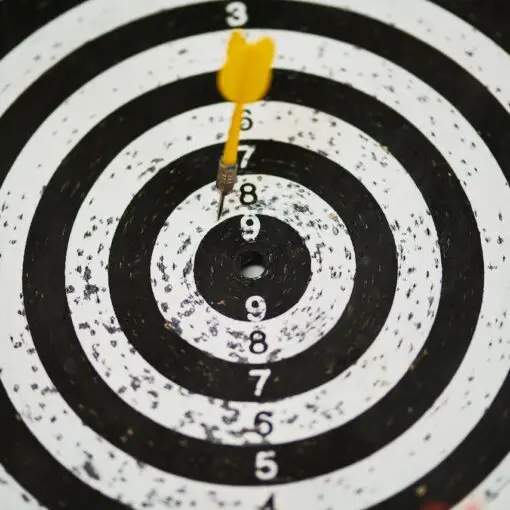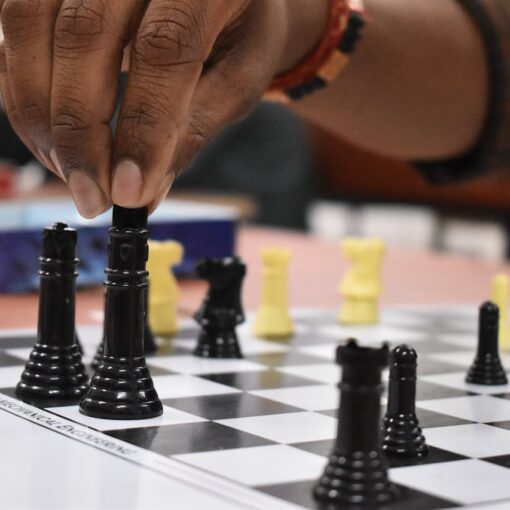Creative thinking and strategic thinking are two distinct yet complementary approaches to problem-solving and decision-making in the business world. Creative thinking focuses on generating innovative ideas, exploring novel perspectives, and fostering originality to find unique solutions. On the other hand, strategic thinking is a methodical, long-term approach that aims to define objectives, identify resources, and develop plans to position an organization for future success.


Both creative and strategic thinking have their own merits and applications in different situations. While creative thinking is applicable in ideation and brainstorming phases, strategic thinking is essential when it comes to executing ideas and putting them into action. By recognizing the value of both approaches and combining the strengths of each, business leaders can make effective decisions based on a comprehensive understanding of a problem or opportunity.
Key Takeaways
- Creative thinking generates innovative ideas and explores novel perspectives, focusing on originality.
- Strategic thinking is a systematic approach to define objectives, identify resources, and develop plans for long-term success.
- Combining creative and strategic thinking allows for effective decision-making and problem-solving in various business situations.
Understanding Creative Thinking


Definition and Characteristics
Creative thinking is the process of generating new ideas and novel solutions to problems by exploring various possibilities and thinking beyond the conventional boundaries. It involves lateral thinking, which is the ability to look at a situation from different perspectives and challenge traditional assumptions. Creative thinkers often question the status quo, are open to new experiences, and possess a strong sense of curiosity.
Characteristics of creative thinking include:
- Originality: coming up with unique ideas that haven’t been explored before.
- Flexibility: adapting to changes and new information, and being able to change the direction of one’s thinking.
- Divergent thinking: exploring multiple alternatives and options, rather than focusing on a single solution.
Creative Thinking Skills
To facilitate creative thinking, individuals must develop certain skills and habits. Some of the key creative thinking skills include:
- Observation: paying close attention to the environment and noticing patterns or details that others might miss.
- Brainstorming: generating a variety of ideas without judgment, encouraging free-flowing and spontaneous ideas.
- Embracing ambiguity: tolerating ambiguity and uncertainty, recognizing that there may not be a clear or “correct” answer.
- Reframing problems: looking at problems from a new angle or perspective, often leading to innovative solutions.
- Connecting the dots: making connections between seemingly unrelated concepts, ideas or experiences.
The Role of Innovation
Innovation is a crucial aspect of creative thinking, as it encompasses the implementation of new ideas, processes, or products. Creative thinkers play a significant role in driving innovation by challenging the existing boundaries and generating solutions that are not only novel but also valuable and practical. In order to promote innovation, it is essential to create an environment that fosters creativity and encourages individuals to explore new ideas without fear of failure.
Creative thinking and innovation are essential in various fields, particularly in science, technology, business, and arts, where they contribute to the constant evolution and improvement of products, services, and methodologies. By nurturing creative thinking skills, individuals and organizations can stay ahead of the curve and maintain a competitive edge in their respective industries.
Exploring Strategic Thinking


Principles of Strategic Thinking
Strategic thinking is a process of analyzing situations, scenarios, and challenges, and then focusing on possible responses and actions that lead to the achievement of long-term goals. It involves the ability to see the bigger picture, prioritize resources, and adapt to changes. Some fundamental principles of strategic thinking include:
- Vision: Crafting a clear vision of the desired future state, aligning it with the organization’s mission and objectives.
- Analysis: Evaluating the current situation, considering factors like market conditions, competition, and internal capabilities.
- Options: Identifying and weighing different alternatives, and determining the best course of action.
- Implementation: Executing the chosen strategy, monitoring progress, and adjusting as necessary.
To further illustrate the principles of strategic thinking, consider the following table:
| Vision | Analysis | Options | Implementation |
|---|---|---|---|
| Long-term | Comprehensive | Adaptive | Consistent |
| Inspiring | Rigorous | Informed by experience and expertise | Supported by resources and capabilities |
| Clear | Considers strengths, weaknesses, opportunities, and threats | Balanced risk and rewards | Focused on execution |
Strategic Thinking in Leadership
Leadership plays a crucial role in nurturing a strategic mindset within an organization. For leaders to instill strategic thinking in their teams, they should:
- Encourage open discussions and idea-sharing.
- Foster a learning-oriented culture, where individuals learn from their experiences.
- Set clear expectations and link them to the organization’s long-term goals.
- Provide resources and support for professional development in strategic thinking.
Strategic Planning Process
To apply strategic thinking effectively, organizations can follow a structured strategic planning process. The process usually entails several stages as outlined below:
- Situation analysis: Assessing the internal and external factors that affect the organization.
- Goal setting: Defining the organization’s long-term objectives and milestones.
- Strategy formulation: Developing strategies to achieve the goals while considering the organization’s strengths and weaknesses.
- Implementation: Allocating resources and mobilizing teams to execute the strategies.
- Evaluation and control: Monitoring performance, measuring results, and making necessary adjustments.
In conclusion, exploring strategic thinking involves understanding its principles, recognizing its significance in leadership, and leveraging it through a well-defined planning process. Emphasizing strategic thinking skills, leaders can steer their organizations toward achieving long-term goals and maintaining a competitive edge.
Creative vs Strategic Thinking


Key Differences
Creative thinking focuses on generating new ideas and exploring numerous possibilities. This approach encourages thinking outside the box, challenging conventional wisdom, and embracing unconventional solutions. Creative thinkers excel at identifying unique connections, breaking down complex issues, and crafting innovative solutions.
Strategic thinking, on the other hand, centers on problem-solving and analyzing long-term objectives. Strategic thinkers carefully evaluate trends, data, and potential obstacles to determine the most effective course of action. They weigh different options and prioritize actions according to the organization’s goals.
| Creative Thinking | Strategic Thinking | |
|---|---|---|
| Focus | New ideas, original solutions | Problem-solving, long-term planning |
| Approach | Open-minded, divergent, unconventional | Analytical, objective-oriented, methodical |
| Strength | Innovation, ideation, broad perspectives | Decision-making, planning, prioritization |
Complementary Approaches
While there are clear differences between creative and strategic thinking, these approaches are not mutually exclusive. In fact, they often complement each other. For example, creative thinking can spark innovations that shape emerging trends, while strategic thinking leverages these trends to achieve specific goals.
Organizations should aim to combine these approaches for a comprehensive problem-solving framework. Incorporating diverse perspectives and thought processes fosters a culture of continuous improvement and adaptability.
Real-World Applications
The interplay between creative and strategic thinking can be observed in various real-world applications. Here are a few examples:
- A product development team might use creative thinking to brainstorm innovative ideas for a new release. Once the ideas are generated, strategic thinking would be employed to evaluate potential markets, assess feasibility, and determine the best course of action.
- A marketing team could leverage creative thinking to craft a captivating advertising campaign. Meanwhile, strategic thinking guides the selection of appropriate channels, defines target audiences, and identifies metrics to gauge success.
- An executive team might rely on creative thinking to reimagine their business model or value proposition. Strategic thinking would then come into play to align resources, set priorities, and create a roadmap for change.
By effectively integrating both creative and strategic thinking, organizations can overcome complex challenges and capitalize on opportunities in today’s rapidly evolving landscape.
Decision-Making and Problem-Solving
Strategic Decision-Making
Strategic decision-making involves a long-term vision and considering the potential implications of various alternatives. These decisions are vital to an organization’s success and should be based on careful analysis and critical thinking. Strategic thinkers gather information from various sources, analyze it, and identify patterns and trends to formulate effective strategies. This process requires a deep understanding of the organization’s objectives, resources, and competitive landscape. Some key concepts in strategic decision-making include setting priorities, assessing risks, and evaluating trade-offs1.
Creative Problem-Solving
Creative problem-solving is a more unstructured approach that encourages innovative ideas and unique solutions. It often involves brainstorming, experimentation, and thinking outside the box to tackle challenges and problems. This process emphasizes flexibility and adaptability, which are essential for addressing complex and uncertain situations. Creative problem-solving skills can help organizations identify new opportunities, develop novel products or services, and improve existing processes. It is important to foster a culture of creativity and collaboration, where employees feel empowered to take risks and learn from their experiences2.
Overcoming Challenges with Hybrid Thinking
A hybrid approach combines elements of both strategic decision-making and creative problem-solving to address a wide range of challenges. This method encourages an organization to think critically and creatively while maintaining focus on its long-term goals. By leveraging the strengths of each approach, organizations can develop comprehensive plans that balance the need for innovation and stability.
For example, a company might use strategic thinking to identify market trends and create a competitive advantage, while employing creative problem-solving to discover novel ways to achieve their objectives. In this context, a few hybrid thinking techniques include:
- Scenario planning: The development of multiple future scenarios to understand the possible outcomes of various decisions, allowing organizations to better prepare for uncertainty3.
- Design thinking: A human-centered, solutions-based process that fosters the ideation and development of creative solutions[^4^].
- Systematic Inventive Thinking (SIT): A problem-solving methodology consisting of structured techniques that stimulate creativity and innovation.
Overall, incorporating both strategic decision-making and creative problem-solving can help organizations overcome challenges and achieve success.
Incorporating Creative and Strategic Thinking in Business
Identifying Opportunities
In today’s competitive business landscape, organizations must remain adaptable and proactive in seeking new opportunities. By incorporating both creative and strategic thinking, businesses can identify untapped markets, develop innovative products, and find ways to capitalize on their strengths. A powerful tool in identifying opportunities can be creating a SWOT (Strengths, Weaknesses, Opportunities, Threats) analysis, which allows organizations to systematically evaluate their position in the market.
- Strengths: Unique capabilities or resources that give a competitive edge.
- Weaknesses: Areas that need improvement or pose potential risks.
- Opportunities: External factors that can be exploited for growth.
- Threats: External factors that may hinder progress or cause harm.
By engaging in both creative and strategic thinking, organizations can challenge their own biases and assumptions, enabling them to pinpoint potential avenues of growth.
In any business environment, organizations will inevitably face situations with ambiguous outcomes. It is essential to embrace uncertainty and develop the ability to navigate through it. Utilizing a combination of creative and strategic thinking enables businesses to approach problems from multiple perspectives, reducing the impact of decision-making biases that may arise in uncertain situations.
A useful technique for navigating ambiguity is the scenario planning approach. This method encourages decision-makers to envision multiple possible futures and understand their implications, allowing them to make informed decisions in the face of uncertainty.
Example of Scenario Planning:
| Scenario | Description | Potential Impact |
|---|---|---|
| A | Strong economic growth. | Increased demand for products and services. |
| B | Economic downturn. | Reduced consumer spending, leading to a decrease in sales. |
| C | Technological breakthrough. | Potential to disrupt the industry or create new opportunities. |
Through scenario planning and other similar approaches, organizations can prepare for various potential outcomes, ensuring their ability to respond effectively to change.
Enhancing Future Success
Ultimately, incorporating creative and strategic thinking into business practices paves the way for enhanced future success. By consistently challenging the status quo and actively seeking new opportunities, businesses position themselves for long-term growth and sustainability. Ensuring your organization fosters an environment that encourages employees to take initiative, share ideas, and collaborate will lead to continued innovation and strategic progress in the face of an ever-changing market landscape.
Tools and Techniques for Thinking Development
Formal Training and Education
Investing in formal training and education can significantly improve one’s creative and strategic thinking abilities. Universities and professional institutions offer various courses, workshops, and certifications in Understanding Creativity and strategy development. These courses often cover topics such as:
- Different thinking styles and approaches
- Techniques for idea generation and problem-solving
- Decision-making strategies and their applications
Acquiring knowledge from experienced practitioners and educators can help individuals adapt and apply creative and strategic thinking in real-world situations.
Practical Exercises
Beyond formal education, engaging in practical exercises can further enhance thinking development. Some common techniques to practice include:
- Brainstorming: Encourage the generation of a multitude of ideas without immediate judgment or evaluation.
- SWOT Analysis: Identify strengths, weaknesses, opportunities, and threats to assess a situation and make informed decisions.
- Scenario Planning: Explore various future scenarios and their potential outcomes to build proactive strategies.
Consistent engagement in strategic thinking exercises can help sharpen one’s cognitive agility and lead to more effective problem-solving and decision-making.
Leveraging Technology and Research
In today’s digital age, several technology tools and research are available for enhancing creative and strategic thinking. Some popular tools include:
- Mind mapping software: Programs like MindMeister and XMind enable users to visually organize ideas, facilitating better information retention and structure.
- Collaboration platforms: Tools such as Trello and Miro allow teams to better collaborate, share thoughts, and co-create.
Additionally, staying informed on the latest findings in creativity and strategy research can help incorporate cutting-edge techniques and methodologies into everyday thinking processes. By combining technology with research-backed knowledge, individuals can boost their creative and strategic thinking skills to excel in their personal and professional lives.
Critical Analysis
Challenging Assumptions and Biases
Critical thinking is a process that involves questioning and analyzing various aspects of a situation or problem. One of the main aspects of critical thinking is challenging assumptions and biases. This means examining the beliefs, attitudes, and preconceptions that form the basis of one’s thinking. By questioning these assumptions, a person can move beyond superficial analysis and uncover deeper insights.
For example, consider a situation where a company is deciding on a new marketing strategy. The manager may assume that the target audience has a certain preference and will respond positively to a particular campaign. In this case, critical thinking would involve questioning this assumption and considering alternative perspectives. Perhaps the target audience has different preferences, or there could be other factors influencing their behavior. By challenging these assumptions, the manager can make more informed decisions and develop a more effective strategy.
Evidence-Based Support
Another important aspect of critical thinking is evidence-based support. This means seeking out credible sources and evaluating the information they provide. When analyzing a problem or situation, it’s essential to consider what evidence is available and how reliable it may be. Without sufficient and accurate data, it’s difficult to make informed decisions and draw accurate conclusions.
For instance, when researching solutions to a problem, it’s important to gather information from reputable and authoritative sources. This could include academic articles, expert opinions, or official statistics. By gathering information from multiple sources, a person can avoid relying on a single perspective and develop a comprehensive understanding of the issue.
Learning from Opposing Ideas
Critical thinking also involves learning from opposing ideas or contrasting perspectives. This includes engaging with arguments that challenge one’s own beliefs and seeking to understand the reasoning behind them. By considering different viewpoints, a person can expand their knowledge, enhance their cognitive flexibility, and develop more robust solutions.
For example, suppose a person holds a strong opinion on a controversial topic. In that case, it is important to consider arguments on both sides of the issue, seeking to understand why others may have different perspectives. Through this process, they may discover that their initial position lacks sufficient evidence or requires further refinement.
In conclusion, critical analysis is an essential component of critical thinking, involving challenging assumptions and biases, seeking evidence-based support, and learning from opposing ideas. By adopting these practices, individuals and organizations can enhance their decision-making capabilities and develop more effective strategies.
The Impact of Mindset on Thinking
The Growth Mindset
A growth mindset emphasizes the idea that intelligence, talent, and abilities are not fixed traits but instead can be developed through hard work, effective strategies, and input from others. This mindset has a significant impact on creative and strategic thinking. Individuals with a growth mindset are more likely to embrace challenges, learn from failure, and persist in the face of setbacks. They tend to ask strategic questions and explore different approaches to find innovative solutions to problems.
In contrast, a fixed mindset leads to a belief that abilities are innate, limiting the willingness to try new strategies, take risks, or adapt to new situations. Consequently, individuals with a fixed mindset may struggle with strategic thinking, as they may fear failure or negative implications for their perceived fixed abilities.
Mindset and Leadership
The mindset of a leader greatly influences the creativity and strategic thinking of their team. Leaders who foster a growth mindset create an environment where experimentation, collaboration, and continuous learning are encouraged. By modeling and valuing these behaviors, they enable their teams to think strategically, embrace challenges, and innovate more effectively.
A growth-oriented leader exemplifies openness to feedback, learning from setbacks, and viewing challenges as opportunities for growth. As a result, their teams are more likely to adapt to changing circumstances, devise creative solutions, and achieve long-term success.
Changing Mindsets for Strategic Advantages
To enhance strategic thinking and gain a competitive edge, it is essential for individuals and organizations to develop a growth mindset. Changing mindsets involves several steps:
- Identify fixed mindset beliefs – Recognize limitations imposed by a fixed mindset, such as fear of failure, avoidance of challenges, or reluctance to seek feedback.
- Reframe beliefs – Replace fixed mindset beliefs with growth-oriented ones, emphasizing improvement, learning, and adaptability.
- Emphasize effort and resilience – Focus on the process, hard work, and resilience rather than solely on the outcome or natural talent.
- Encourage a culture of continuous learning – Design processes and systems that support learning, collaboration, and experimentation, ensuring that the organization remains agile and innovative.
Adopting a growth mindset not only enhances strategic thinking, but it also helps individuals and organizations navigate the complexities of today’s rapidly evolving business landscape. By fostering a mindset that values learning, innovation, and adaptability, organizations can better leverage opportunities for growth and achieve lasting success.
Conclusion
In the comparison between creative and strategic thinking, it becomes clear that both play critical roles in problem-solving and decision-making processes. Acting with confidence and knowledge, the emphasis lies on different aspects for each mode of thinking.
Creative thinking often focuses on generating new ideas, fostering innovation, and considering multiple perspectives. In contrast, strategic thinking is aimed at analyzing situations, identifying patterns, and anticipating potential outcomes, ultimately working with a long-term perspective. The scope of creative thinking may be more open-ended, while strategic thinking narrows down to specific goals and tasks.
When it comes to outcomes, creative thinking produces novel solutions and fresh insights, paving the way for strategic thinkers to make informed decisions and achieve their objectives. The purpose of both thinking styles is to improve and enhance the effectiveness and efficiency of individuals and organizations in addressing various challenges.
Here are some key takeaways from the discussion:
- Creative thinking drives innovation and encourages exploration of new ideas.
- Strategic thinking focuses on analysis, planning, and long-term perspective.
- The purpose of both modes of thinking is to enhance problem-solving and decision-making.
In essence, creative and strategic thinking complement each other and, when employed effectively, lead to a more comprehensive understanding of tasks and challenges. Ultimately, nurturing both forms of thought will contribute to greater success in professional and personal endeavors.





